Abstract
The key pecking of two pigeons was reinforced with food on a progressive-ratio schedule, which required an increasing number of responses for each successive reinforcement: 8, 16, 24, 32, etc. When the subject failed to complete the next ratio in the sequence within 60 min, the session terminated. The number of responses in the final completed ratio was defined as the “breaking point”. After the breaking point had stabilized (60 sessions), it served as a baseline to assess the effects of varying doses (5 to 80 mg/kg) of chlordiazepoxide and phenobarbital, administered intramuscularly 30 min before the sessions. Both drugs increased the breaking point. The dose-effect curves were inverted U-shaped, with maximum enhancement of performance occurring at 20 mg/kg for chlordiazepoxide and at 40 mg/kg for phenobarbital. A comparable enhancement was not obtained during a non-drug “probe” session, which was conducted after the subjects' body weights had been temporarily reduced from 80% to 70% of their free-feeding weights. The drug-induced enhancement of breaking point was related to the initial values of the performance and may represent a reduction in the aversiveness of the schedule.
Full text
PDF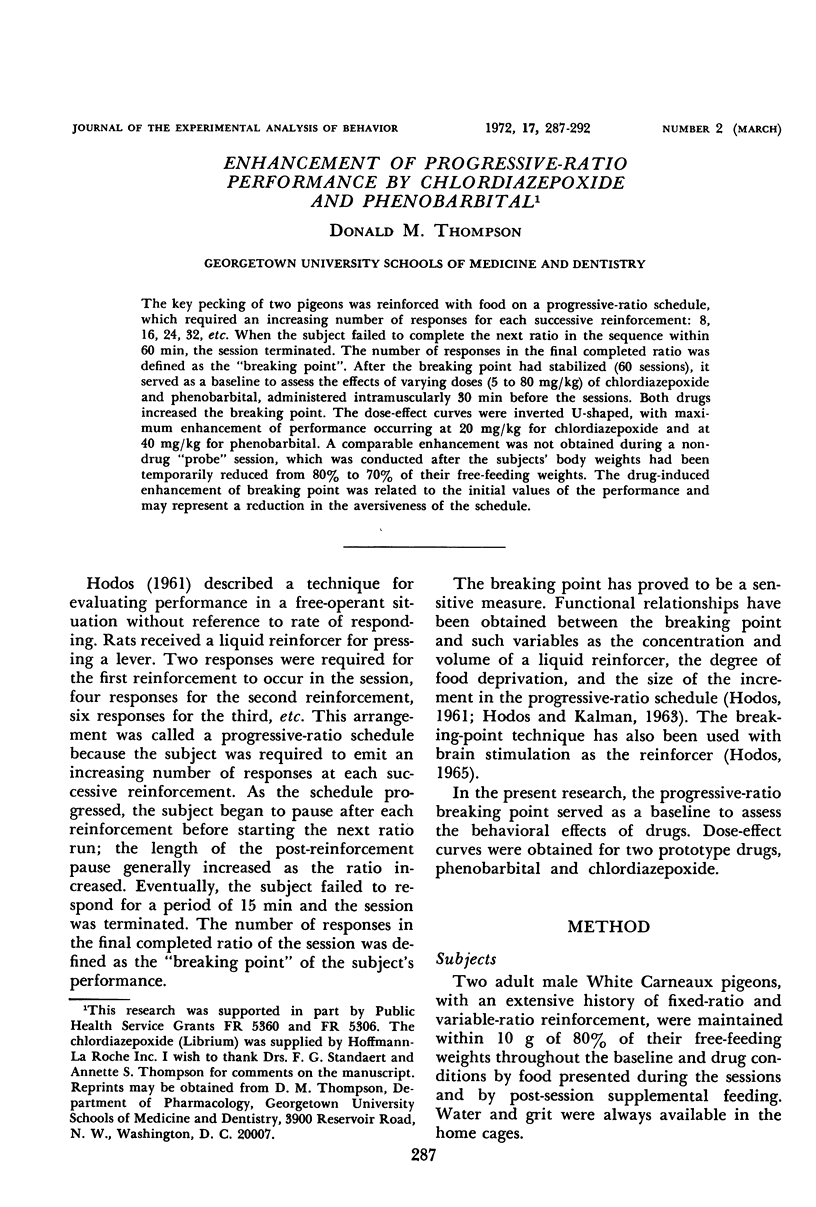
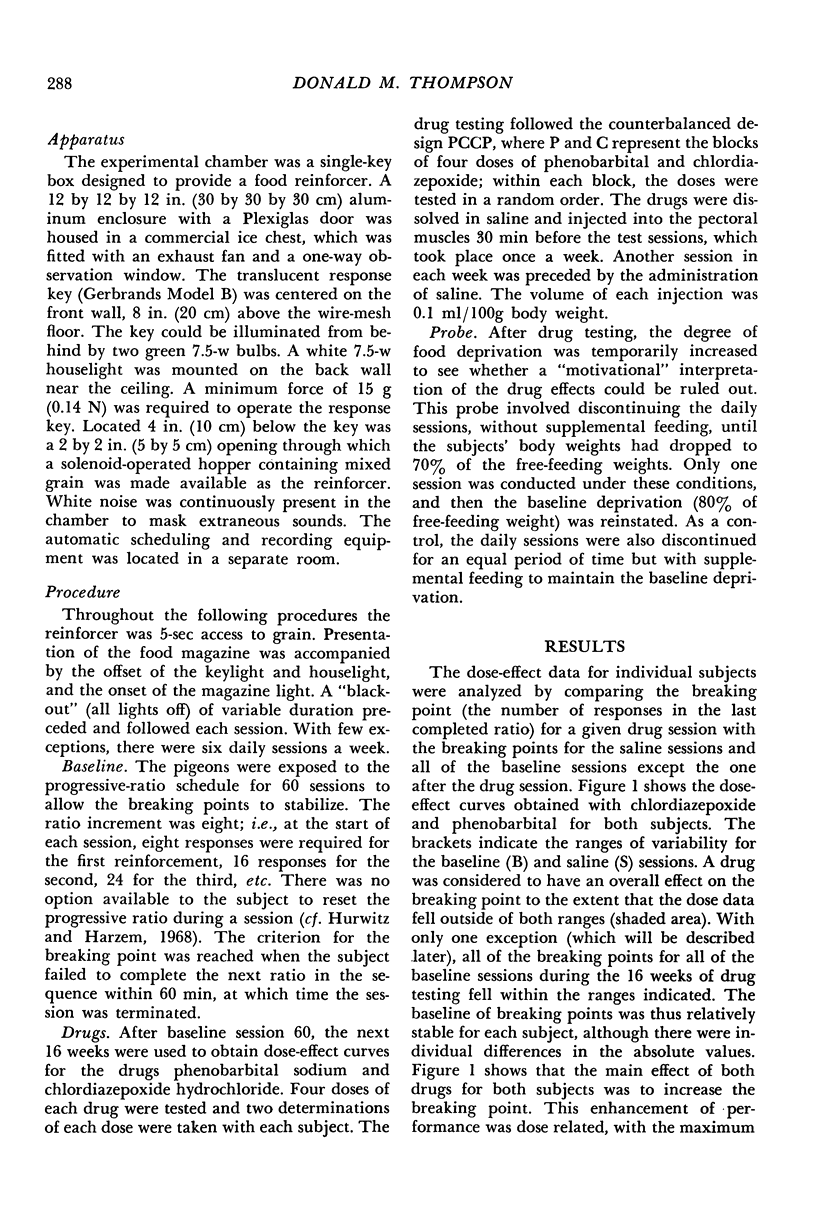
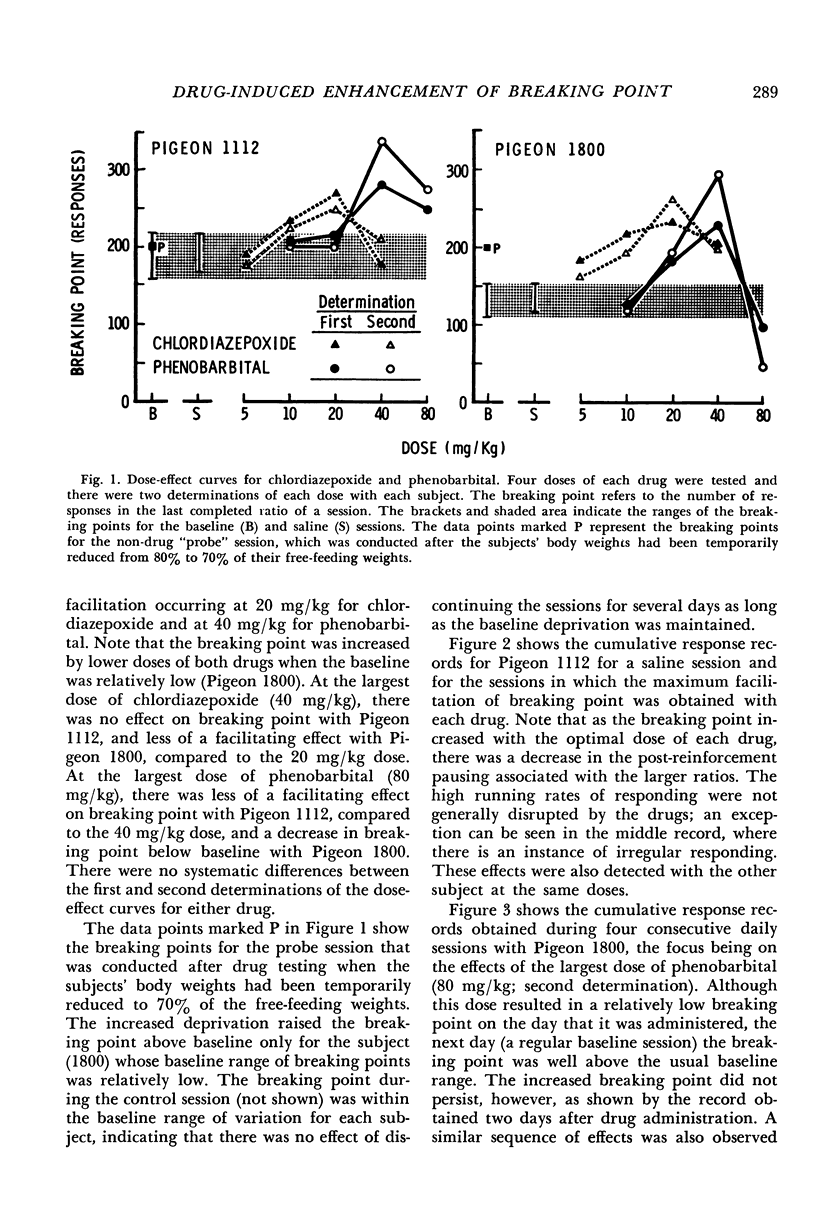
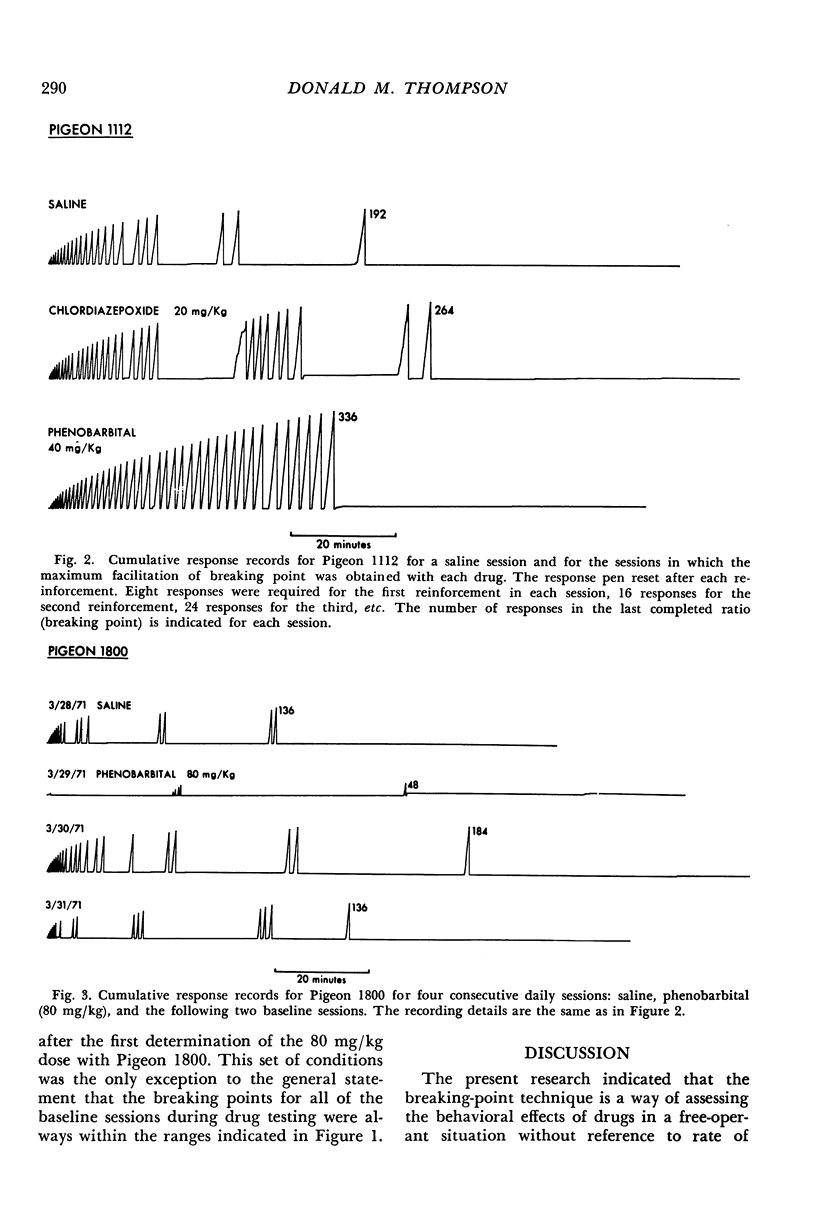
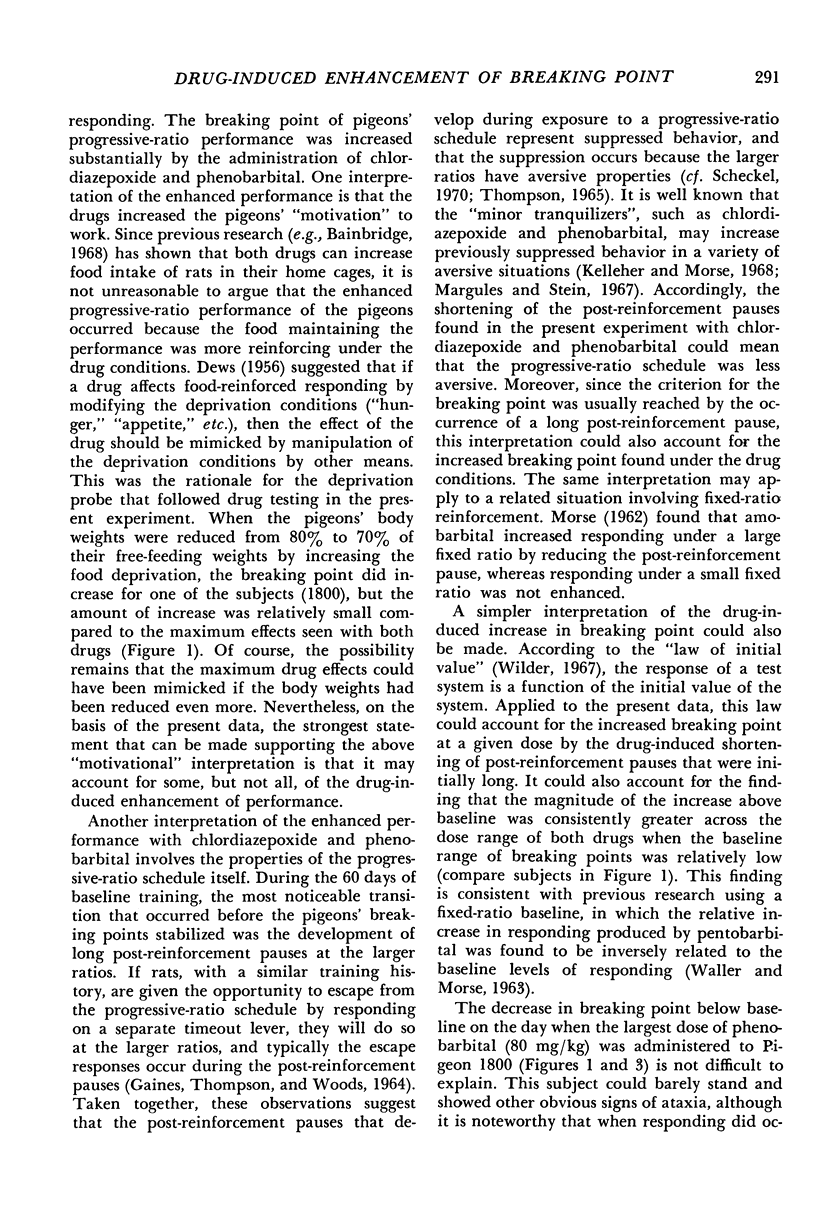
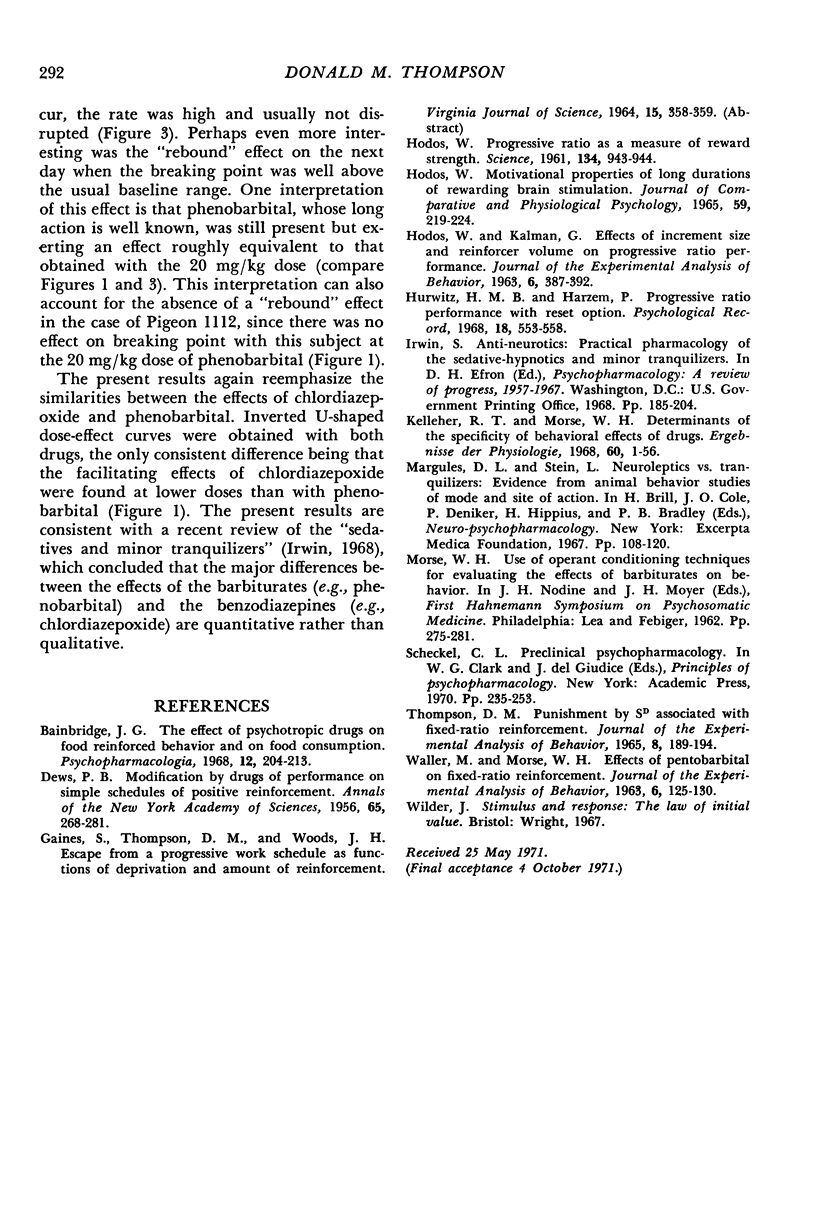
Selected References
These references are in PubMed. This may not be the complete list of references from this article.
- Bainbridge J. G. The effect of psychotropic drugs on food reinforced behavior and on food consumption. Psychopharmacologia. 1968;12(3):204–213. [PubMed] [Google Scholar]
- DEWS P. B. Modification by drugs of performance on simple schedules of positive reinforcement. Ann N Y Acad Sci. 1956 Nov 2;65(4):268–281. doi: 10.1111/j.1749-6632.1956.tb49639.x. [DOI] [PubMed] [Google Scholar]
- HODOS W., KALMAN G. Effects of increment size and reinforcer volume on progressive ratio performance. J Exp Anal Behav. 1963 Jul;6:387–392. doi: 10.1901/jeab.1963.6-387. [DOI] [PMC free article] [PubMed] [Google Scholar]
- HODOS W. MOTIVATIONAL PROPERTIES OF LONG DURATIONS OF REWARDING BRAIN STIMULATION. J Comp Physiol Psychol. 1965 Apr;59:219–224. doi: 10.1037/h0021818. [DOI] [PubMed] [Google Scholar]
- HODOS W. Progressive ratio as a measure of reward strength. Science. 1961 Sep 29;134(3483):943–944. doi: 10.1126/science.134.3483.943. [DOI] [PubMed] [Google Scholar]
- Kelleher R. T., Morse W. H. Determinants of the specificity of behavioral effects of drugs. Ergeb Physiol. 1968;60:1–56. doi: 10.1007/BFb0107250. [DOI] [PubMed] [Google Scholar]
- THOMPSON D. M. PUNISHMENT BY SD ASSOCIATED WITH FIXED-RATIO REINFORCEMENT. J Exp Anal Behav. 1965 May;8:189–194. doi: 10.1901/jeab.1965.8-189. [DOI] [PMC free article] [PubMed] [Google Scholar]
- WALLER M. B., MORSE W. H. Effects of pentobarbital on fixed-ratio reinforcement. J Exp Anal Behav. 1963 Jan;6:125–130. doi: 10.1901/jeab.1963.6-125. [DOI] [PMC free article] [PubMed] [Google Scholar]


